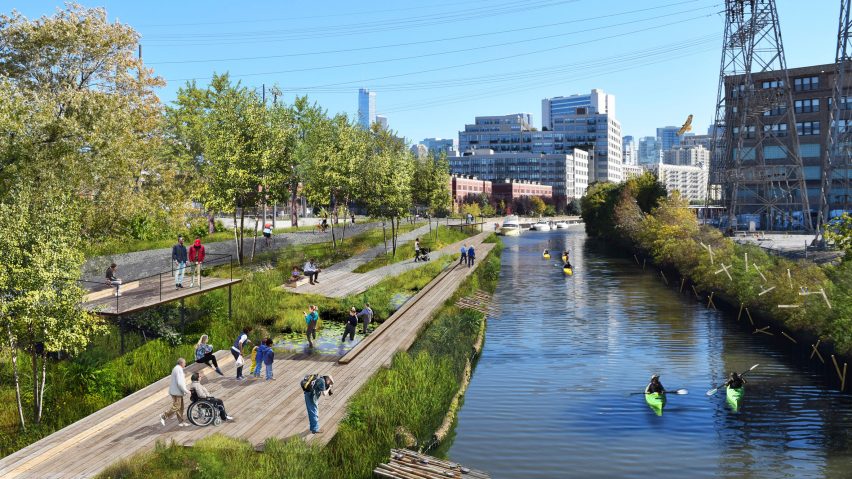Architects must act quickly and cooperatively to change cities and make their environmental good intentions reality, says Doug Voigt, urban design and planning partner at SOM.
As the alarm bells have grown louder and more insistent with each new scientific report, organisations including the RIBA and the American Institute of Architects have added their voices to a growing global declaration of emergency. But how will architects and urban designers respond to the climate crisis, and what concrete steps should we take to put these intentions into practice?
The most recent United Nations summary report for policymakers, published in May, presents a clear and urgent picture of the threat to life on this planet. Of an estimated total of eight million plant and animal species alive today, one million are at risk of extinction.
Understanding the wide-ranging implications should motivate the design community to focus our efforts on protecting biodiversity – an essential factor in the overall strength of the environment. Addressing the climate crisis will require solutions to the biodiversity crisis.
Design firms are in a unique position to lead the charge, partnering with allies in science to help reverse this existential threat
While the UN summary report presents an ominous picture, it also gives cause for hope: it highlights meaningful solutions and "ecosystem-based approaches" to mitigate the effects of human-induced climate change.
Design firms are in a unique position to lead the charge, partnering with allies in science to help reverse this existential threat. As professionals engaged in projects at the scale of cities and regions, we have a special understanding of our relationship with the natural world, and of the importance of protecting the integrity of ecological systems.
Our challenge is to create truly regenerative cities, designed to restore the natural environment in concert with urban development and growth. We should focus on ways to create and sustain mutual benefits for people and the environment. For instance, many ecosystems serve "sponges", with the potential to absorb 5.6 gigatons of carbon per year worldwide, or roughly 60 per cent of anthropogenic emissions. Protecting and restoring these natural systems should be at the heart of any responsible urban development project.
At the same time that we are bearing witness to Earth's sixth mass extinction, we are also undergoing an unprecedented period of urban expansion and growth
One such endeavor is taking shape today along the North Branch of the Chicago River – where a formerly industrial, human-made waterfront is being transformed into a mile-long floating eco-park. More than just a public amenity, the project, called the Wild Mile, will generate cleaner water and support diverse and thriving ecosystems.
As the result of a long-term vision shared by a coalition of community groups, city government, industry, and academic partners, it demonstrates the type of ambitious, collaborative planning that can lead us toward more resilient and regenerative cities.
At the same time that we are bearing witness to Earth's sixth mass extinction, we are also undergoing an unprecedented period of urban expansion and growth. In the past 50 years, the Earth's human population has doubled. The global economy has grown fourfold, and global trade has increased tenfold. To be sure, rapid global urbanization has accelerated the effects of climate change, but the magnitude of the forces reshaping our world also suggests the possibility to find transformative new solutions.
The deterioration of Earth's biodiversity could be reversed at an equally rapid pace if we find new ways to design and build our cities – ways that do not harm our social and natural environments, but instead restore and regenerate them.
At this pivotal moment, we cannot idle as the defining challenge of our time advances
At SOM, we have accelerated our focus on climate change, are undeterred by the challenges, and are focused on how we can design to drive positive change. As a global collective of architects, designers, engineers and planners building a better future, we are determined to contribute in a meaningful way to avert environmental collapse. The answers are not simple, and they must lead us to improve the way in which we engage with governments, clients, the broader design and construction industry, and our own communities.
At this pivotal moment, we cannot idle as the defining challenge of our time advances. We must mobilise and act quickly and cooperatively. It will take all of us to address the most urgent challenge of our lifetime. The life of our planet, and of future generations, hangs in the balance.

